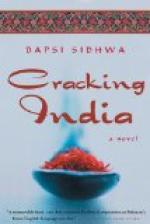|
This section contains 18,256 words (approx. 61 pages at 300 words per page) |

|
SOURCE: Hai, Ambreen. “Border Work, Border Trouble: Postcolonial Feminism and the Ayah in Bapsi Sidhwa's Cracking India.” Modern Fiction Studies 46, no. 2 (summer 2000): 379-426.
In the following essay, Hai discusses Sidhwa's Cracking India in terms of the rubric of border-crossing in postcolonial literature.
Borderlands […] may feed growth and exploration or […] conceal a minefield.
—Margaret Higonnet, Borderwork: Feminist Engagements with Comparative Literature
It is the intersections of the various systemic networks of class, race, (hetero)sexuality, and nation, then, that position us as “women.”
—Chandra Mohanty, “Cartographies”
In Rudyard Kipling's short story “On the City Wall,” the border between city and country, between British control and Indian resistance, and between colonizer and colonized is occupied by the fantastical figure of Lalun, the “exquisite” courtesan, entertainer, and artist, on whose hospitable grounds men of all races and religions amicably meet.1 Literally located on the border of Lahore (now a border city...
|
This section contains 18,256 words (approx. 61 pages at 300 words per page) |

|


